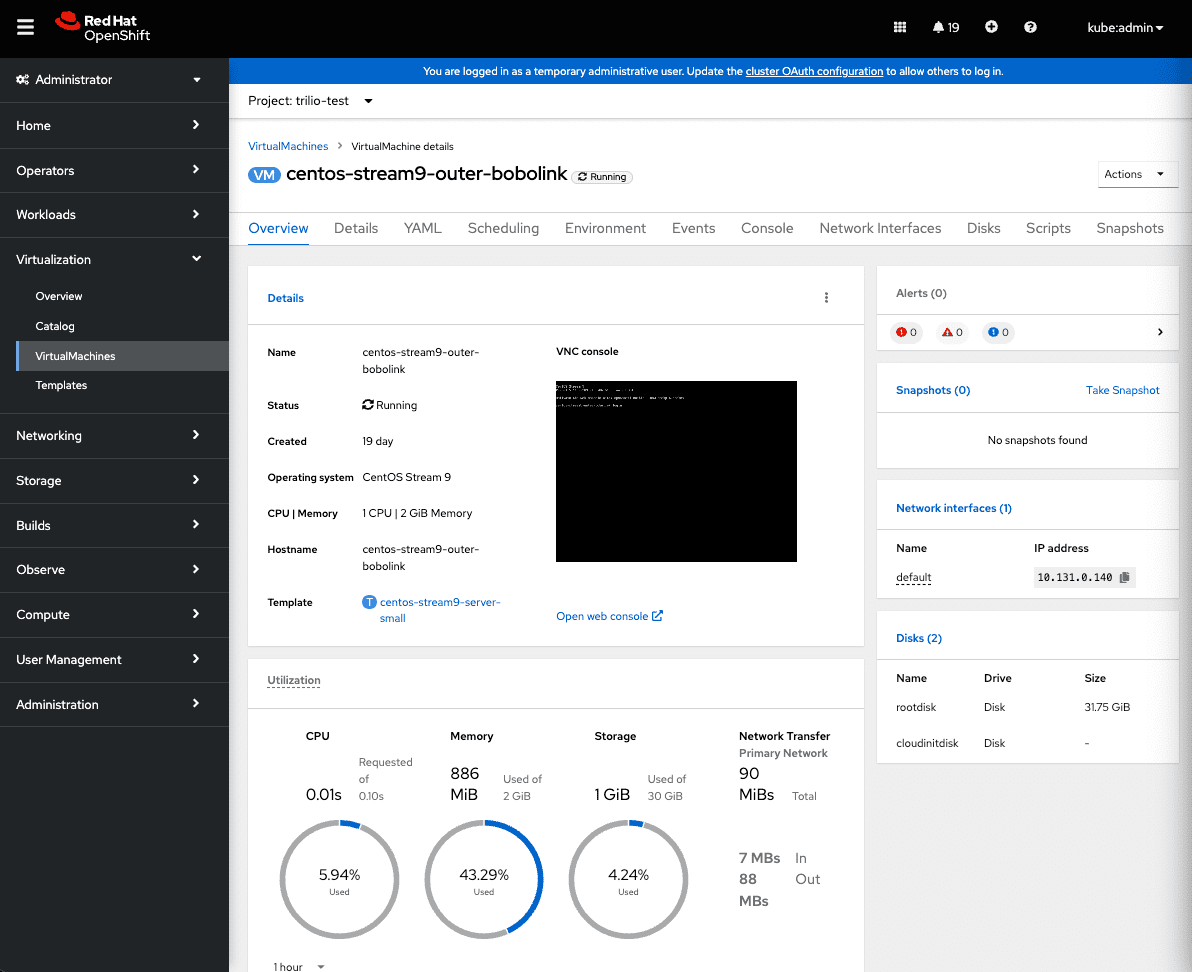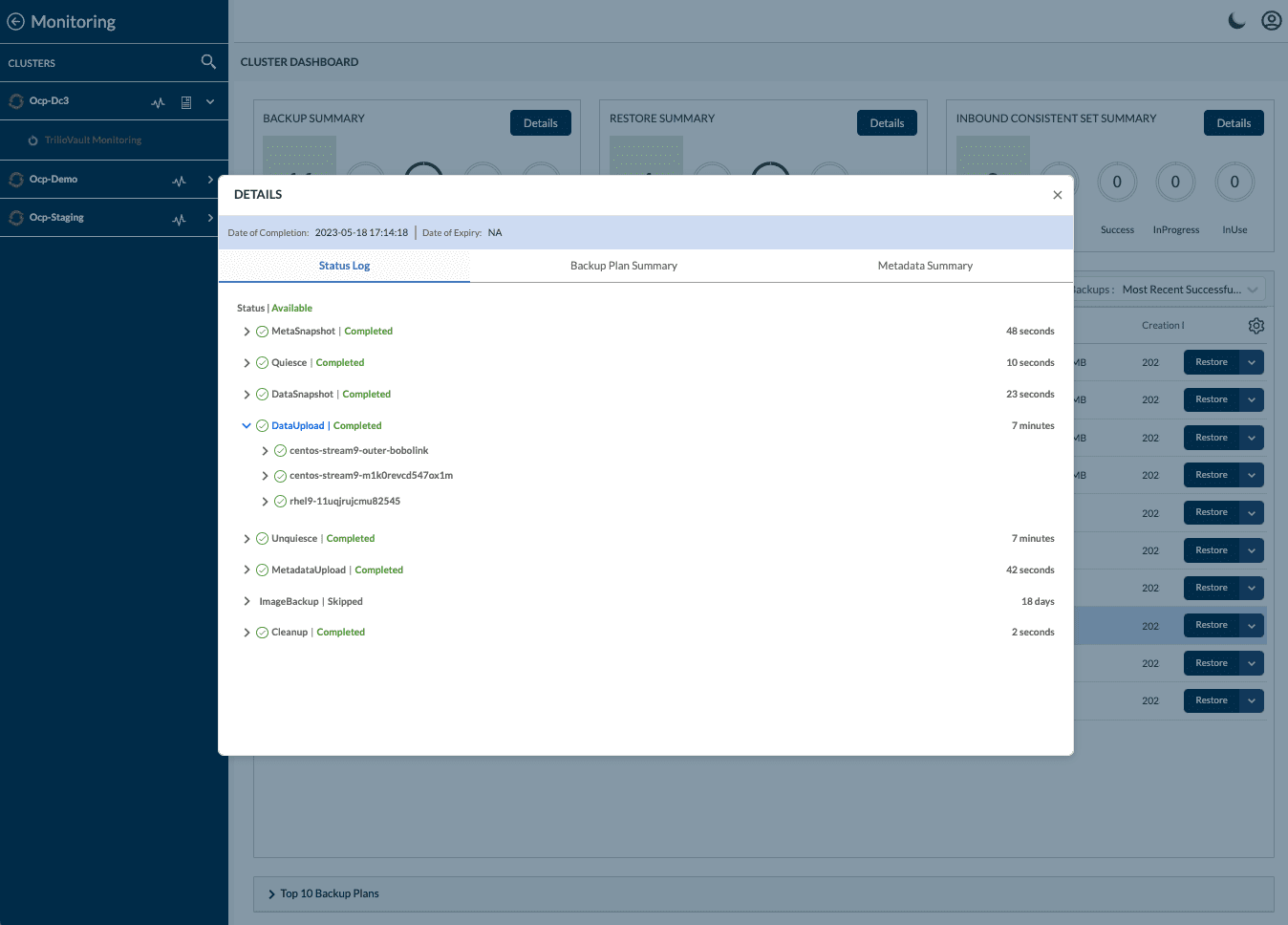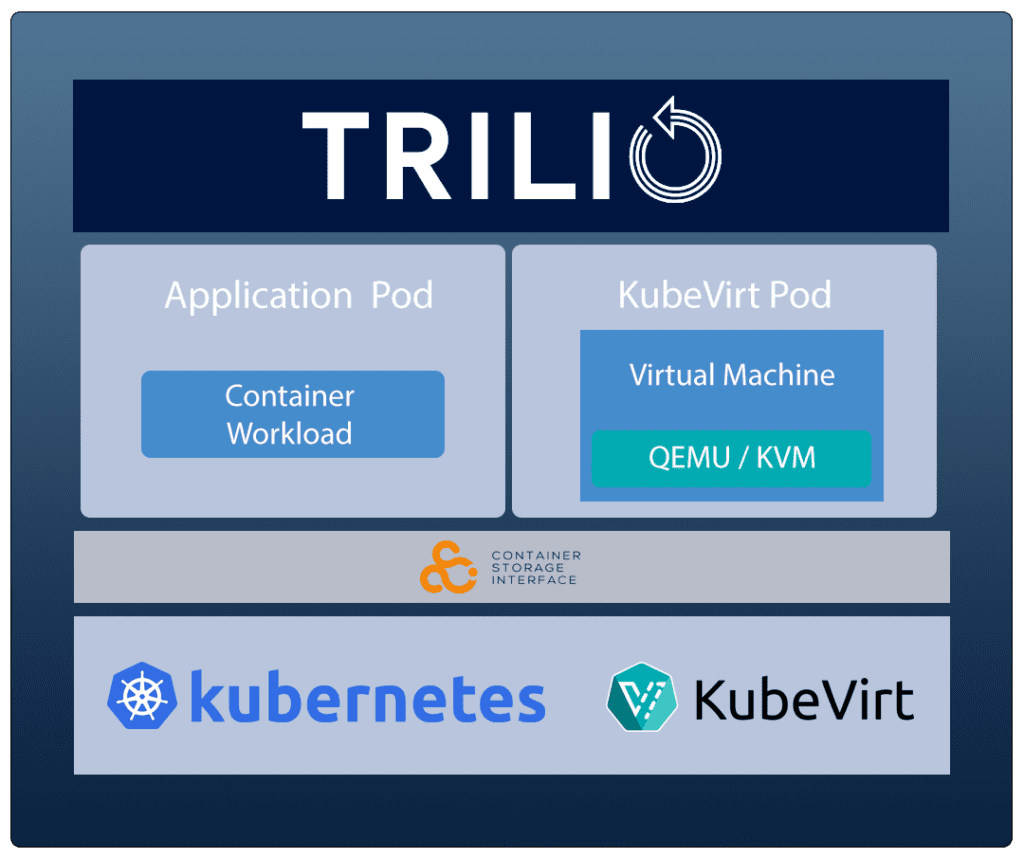What is Red Hat OpenShift Virtualization?
Red Hat® OpenShift® Virtualization is a feature of Red Hat OpenShift that allows you to run and manage virtual machine (VM) and container workloads side by side.
New development is shifting to containers, but organizations also have a huge investment in applications that run as VMs, many of which provide vital services to new and existing containerized applications.
OpenShift Virtualization (formerly container-native virtualization) lets developers bring VMs into containerized workflows by running a VM within a container where they can develop, manage, and deploy VMs side-by-side with containers and serverless, all in one platform.
OpenShift Virtualization combines two technologies into a single management platform so organizations can take advantage of the simplicity and speed of containers and Kubernetes, while still benefiting from the applications and services that have been architected for VMs.
What is KubeVirt?
OpenShift Virtualization is based on KubeVirt, an open source project that makes it possible to run VMs in a Kubernetes-managed container platform. KubeVirt delivers container-native virtualization by using Kernel-based Virtual Machine (KVM) within a Kubernetes container.
KubeVirt provides services like those associated with traditional virtualization platforms, providing the best of both mature virtualization management technology and Kubernetes.
Started by Red Hat, KubeVirt is now a CNCF incubating project. Red Hat is one of the leading contributors to the Kubernetes ecosystem, and builder of key features such as StatefulSets, role-based access control (RBAC), and Network Policy, as well as critical components of Kubernetes, including etcd (the cornerstone of Kubernetes that maintains cluster configuration).
Trilio supports both KubeVirt and OpenShift Virtualization.
Here are some of the benefits of using OpenShift Virtualization:
-
Agility: OpenShift Virtualization makes it easy to deploy and manage VMs. You can use OpenShift to create VMs and then deploy your applications to those VMs. This gives you a lot of flexibility in how you deploy your applications, and it can help you to quickly adapt to changes in your business needs.
-
Scalability: OpenShift Virtualization is highly scalable. You can easily add more VMs to your OpenShift cluster as your needs grow. This can help you to improve the performance and availability of your applications.
-
Security: OpenShift Virtualization includes a number of security features that can help to protect your VMs. For example, OpenShift supports role-based access control (RBAC), which allows you to control who has access to your VMs. OpenShift also supports encryption, which can help to protect your VMs from unauthorized access.

Trilio’s Intelligent Recovery Platform for OpenShift and How it Enhances OpenShift Virtualization
Despite the benefits of OpenShift Virtualization, there is always the risk of data loss or corruption. This can happen due to a number of factors, such as human error, hardware failure, or a cyberattack. If your data is lost or corrupted, you could experience significant downtime, which could cost your business money.
Trilio is a backup and recovery solution that can help you protect your OpenShift applications. Trilio can back up your entire OpenShift environment, including your VMs, containers, and data. Trilio also supports continuous restore of application and data, which means that your data is always up-to-date. This can help you to recover from a disaster quickly and easily.
Trilio for OpenShift Virtualization features:
Backup, Recover and Migration VMs using the same native tools and workflow you’re used to for backing up containers
Selection on a per-VM, label or Namespace basis
Can recover individual VMs from Namespaces
Able to perform Full and Incremental backups to save space and network bandwidth on target storage

In addition to all the great features of Trilio for OpenShift, including
Continuous Restore, to provide fast failover to OpenShift running anywhere
Integration into Red Hat Advanced Cluster Manager for central governance and backup policy control
Continue to use the OpenShift Client (oc); there is no additional clients needed to operate Trilio
Able to utilise Trilio’s Ansible Playbook Collection to orchestrate all aspects of backup, recovery, migration and disaster recovery
Hooks for application consistency and orchestrated recovery
Encryption and immutability
Summary
OpenShift Virtualization is a powerful tool that can help you improve the agility, scalability, and security of your applications. However, there is always the risk of data loss or corruption. Trilio is a backup and recovery solution that can help you protect your OpenShift applications. By using Trilio, you can ensure that your data is always safe and secure.
Here are some additional benefits of using Trilio:
Reduced costs: Trilio can help you to reduce the cost of backup and recovery by automating the process and eliminating the need for manual intervention.
Improved compliance: Trilio can help you to meet your compliance requirements by providing a comprehensive audit trail of your backup and recovery activities.
Increased peace of mind: Trilio can give you peace of mind knowing that your data is always protected, even in the event of a disaster.
If you are using OpenShift, I encourage you to consider using Trilio for backup and recovery. Trilio can help you to protect your applications and data, and give you peace of mind knowing that you are prepared for any disaster.

